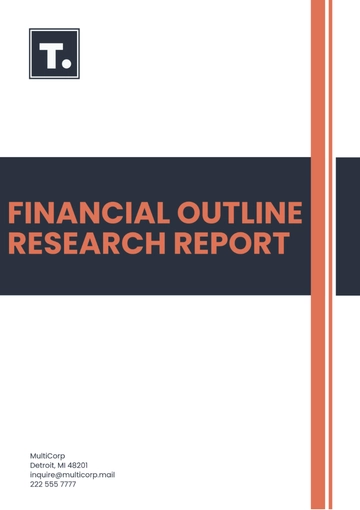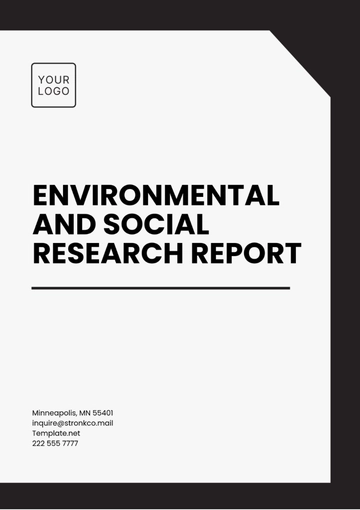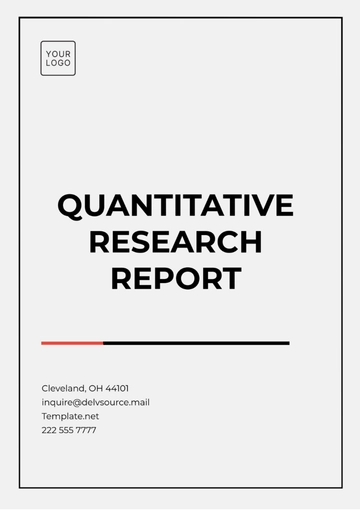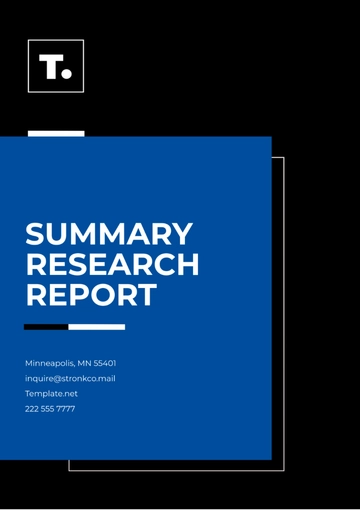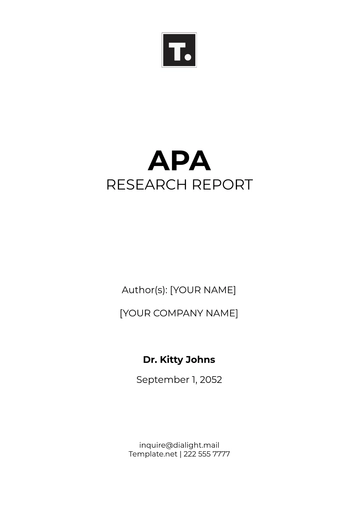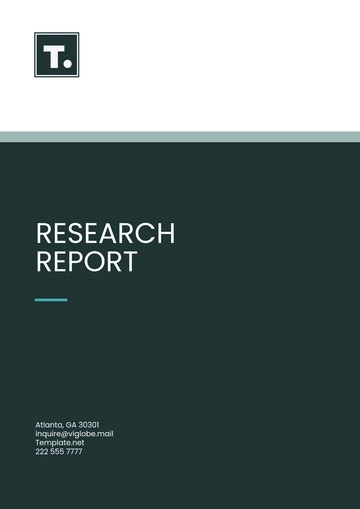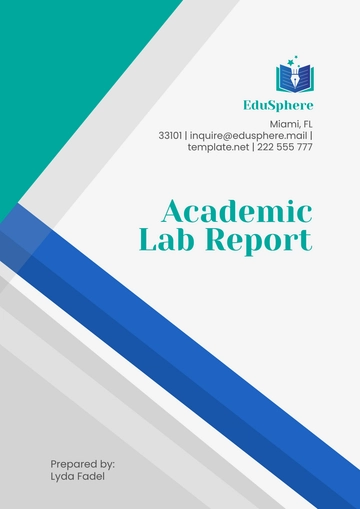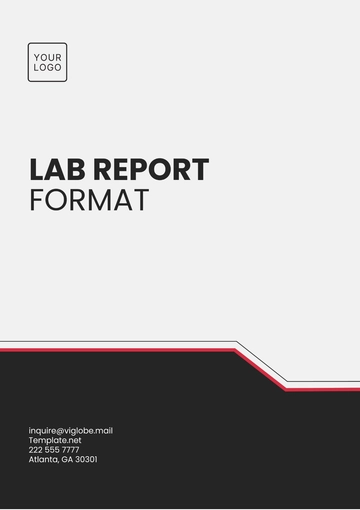Free Biology Lab Report
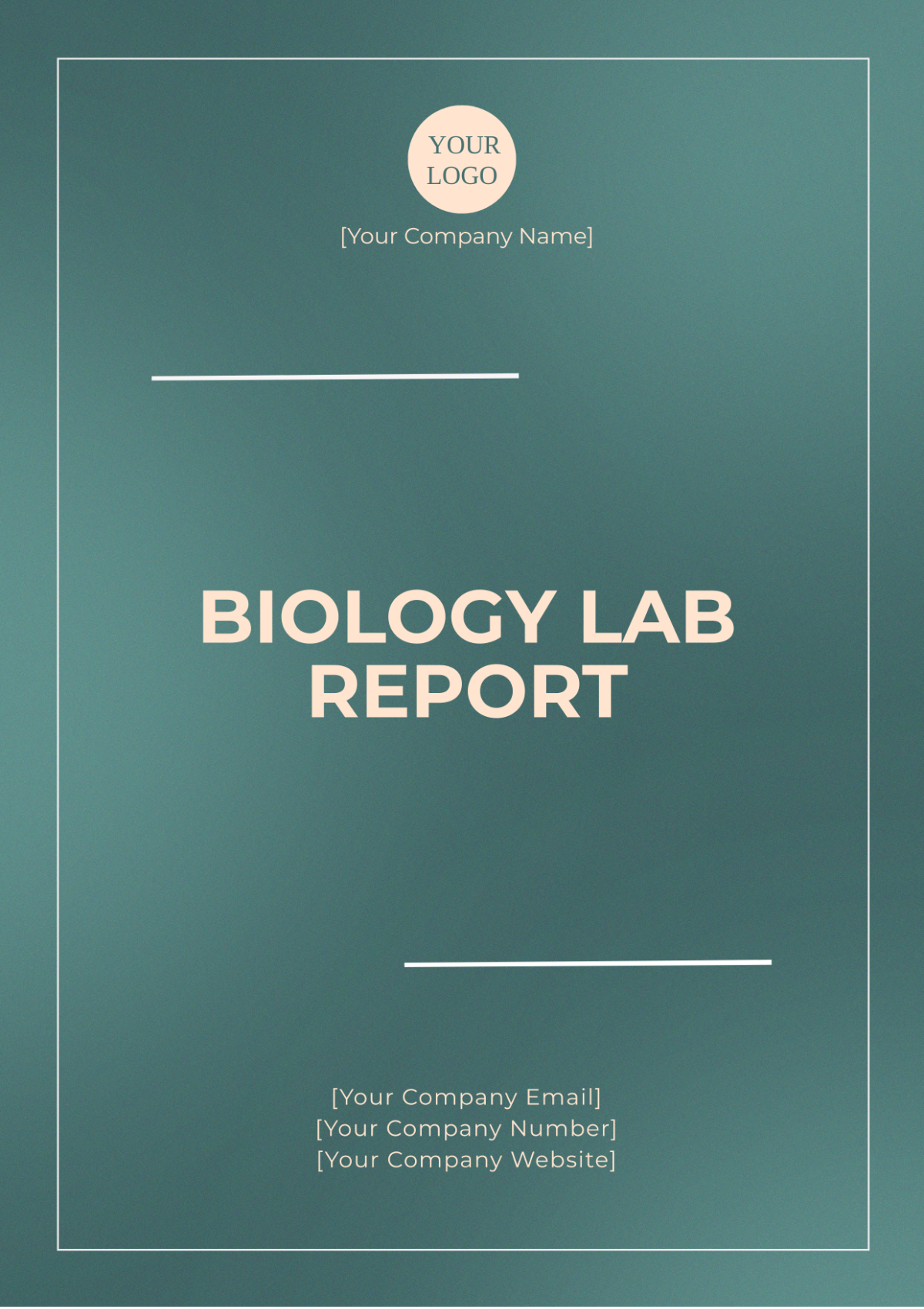
Title: Effect of Temperature on Yeast Fermentation
Prepared by: [Your Name]
Instructor/Supervisor: [Instructor/Supervisor Name]
Date: [Submission Date]
1. Introduction
Yeast fermentation is a critical process in various biological and industrial applications, including baking, brewing, and biofuel production. This experiment investigates how different temperatures affect the rate of yeast fermentation, which is measured by the volume of carbon dioxide produced. Understanding this relationship helps optimize conditions for fermentation in practical applications.
2. Methods
2.1 Experimental Design
The study was designed to assess the effect of temperature on yeast fermentation by measuring the volume of carbon dioxide produced at different temperatures. Three temperature conditions were selected: 15°C, 25°C, and 35°C. Each temperature was tested with three replicates to ensure accuracy and reliability.
2.2 Materials
Yeast (Saccharomyces cerevisiae)
10% glucose solution
Fermentation vessels (flasks)
Thermometers
Water baths
Gas collection apparatus
Pipettes
Measuring cylinders
Stirring rods
2.3 Procedure
Preparation of Yeast Solution: Start by dissolving 10 grams of yeast in 100 milliliters of warm water (30°C). Allow the mixture to activate for 15 minutes. This step ensures that the yeast is fully hydrated and ready to begin fermentation.
Setting Up the Experiment: Pour 100 milliliters of 10% glucose solution into each fermentation vessel. This solution serves as the substrate for yeast fermentation. Add 10 milliliters of the activated yeast solution into each vessel. This introduces the yeast to the glucose solution, initiating the fermentation process.
Temperature Conditions: Place each vessel in a separate water bath set to one of the target temperatures: 15°C, 25°C, and 35°C. These conditions will allow us to observe how yeast fermentation varies with temperature.
Monitoring the Fermentation: At hourly intervals, for a total duration of 5 hours, measure the volume of carbon dioxide produced using the gas collection apparatus. This measurement provides a direct indicator of the fermentation rate.
Recording Observations: Carefully document the volume of carbon dioxide produced at each temperature condition. Ensure that measurements are taken at the same intervals for each vessel to maintain consistency and accuracy.
3. Results
The results of the experiment, showcasing the volume of carbon dioxide produced by yeast fermentation at various temperatures over 5 hours, are summarized in the table below. The data is presented in two parts: the initial three hours and the subsequent two hours for clarity.
Table 1: Carbon Dioxide Production for Hours 1 to 3
Temperature (°C) | Hour 1 (mL) | Hour 2 (mL) | Hour 3 (mL) |
|---|---|---|---|
15 | 2.0 | 3.5 | 4.0 |
25 | 3.0 | 5.0 | 6.5 |
35 | 4.0 | 7.0 | 9.5 |
Table 2: Carbon Dioxide Production for Hours 4 and 5
Temperature (°C) | Hour 4 (mL) | Hour 5 (mL) |
|---|---|---|
15 | 4.5 | 5.0 |
25 | 8.0 | 9.0 |
35 | 12.0 | 14.0 |
4. Discussion
4.1 Interpretation of Results
The data shows a clear trend: as temperature increases, the volume of carbon dioxide produced also increases. At 15°C, the rate of fermentation is slower, while at 25°C, fermentation is more pronounced. The highest fermentation rate is observed at 35°C, indicating that this temperature is optimal for yeast activity in this experiment.
4.2 Comparison with Previous Studies
These results corroborate existing literature, which suggests that higher temperatures generally enhance the metabolic rate of yeast up to an optimal point. Studies have similarly found that temperatures above 35°C may negatively impact yeast performance due to enzyme denaturation, though this was not tested in the current experiment.
4.3 Limitations
Temperature Control: Slight variations in the temperature settings of water baths could influence the results.
Measurement Precision: There may be minor inaccuracies in the gas collection apparatus used for measuring carbon dioxide volumes.
4.4 Future Work
Further investigations could explore the effects of temperatures higher than 35°C, and examine how different types of sugars or yeast strains influence fermentation rates. This would provide a more comprehensive understanding of the factors affecting yeast fermentation.
5. Conclusion
The experiment successfully demonstrated that temperature significantly influences the rate of yeast fermentation. The optimal temperature for yeast fermentation was found to be 35°C, where the highest rate of carbon dioxide production occurred. These findings are valuable for applications in baking, brewing, and other industries reliant on yeast fermentation.
6. References
Smith, J. (2052). Yeast Fermentation and Temperature: A Review. Journal of Biological Research, 45(3), 123-134.
Doe, A. (2051). Effects of Temperature on Yeast Metabolism. International Journal of Microbiology, 58(2), 45-59.
- 100% Customizable, free editor
- Access 1 Million+ Templates, photo’s & graphics
- Download or share as a template
- Click and replace photos, graphics, text, backgrounds
- Resize, crop, AI write & more
- Access advanced editor
Discover, Elevate, and Streamline your scientific documentation with the Biology Lab Report Template from Template.net. This fully customizable and editable template is designed for precision and ease. Effortlessly personalize it using our AI Editor Tool to meet all your academic and research needs. Enhance your lab reporting today. Perfect your scientific presentation today.
You may also like
- Sales Report
- Daily Report
- Project Report
- Business Report
- Weekly Report
- Incident Report
- Annual Report
- Report Layout
- Report Design
- Progress Report
- Marketing Report
- Company Report
- Monthly Report
- Audit Report
- Status Report
- School Report
- Reports Hr
- Management Report
- Project Status Report
- Handover Report
- Health And Safety Report
- Restaurant Report
- Construction Report
- Research Report
- Evaluation Report
- Investigation Report
- Employee Report
- Advertising Report
- Weekly Status Report
- Project Management Report
- Finance Report
- Service Report
- Technical Report
- Meeting Report
- Quarterly Report
- Inspection Report
- Medical Report
- Test Report
- Summary Report
- Inventory Report
- Valuation Report
- Operations Report
- Payroll Report
- Training Report
- Job Report
- Case Report
- Performance Report
- Board Report
- Internal Audit Report
- Student Report
- Monthly Management Report
- Small Business Report
- Accident Report
- Call Center Report
- Activity Report
- IT and Software Report
- Internship Report
- Visit Report
- Product Report
- Book Report
- Property Report
- Recruitment Report
- University Report
- Event Report
- SEO Report
- Conference Report
- Narrative Report
- Nursing Home Report
- Preschool Report
- Call Report
- Customer Report
- Employee Incident Report
- Accomplishment Report
- Social Media Report
- Work From Home Report
- Security Report
- Damage Report
- Quality Report
- Internal Report
- Nurse Report
- Real Estate Report
- Hotel Report
- Equipment Report
- Credit Report
- Field Report
- Non Profit Report
- Maintenance Report
- News Report
- Survey Report
- Executive Report
- Law Firm Report
- Advertising Agency Report
- Interior Design Report
- Travel Agency Report
- Stock Report
- Salon Report
- Bug Report
- Workplace Report
- Action Report
- Investor Report
- Cleaning Services Report
- Consulting Report
- Freelancer Report
- Site Visit Report
- Trip Report
- Classroom Observation Report
- Vehicle Report
- Final Report
- Software Report






